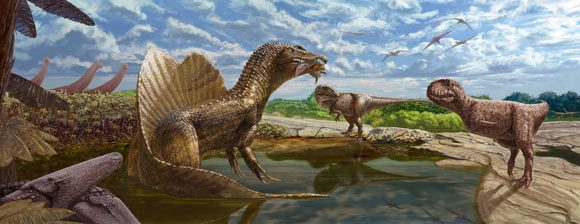The recently excavated creature is a well-preserved cervical vertebra of a medium-sized abelisaurid ceratosaur, a species belonging to the theropod group—known as “beast-footed dinosaurs”—which includes the famous Tyrannosaurus rex.
This fossilized creature lived approximately 98 million years ago and had a dog-like face, small teeth, short arms, and a length of 6 meters.

Description of the “monster world” Bahariya – (Photo: Carnegie Museum of Natural History)
According to a research team led by paleontologist Belal Salem from Ohio State University, this new fossil represents the first confirmed abelisaurid fossil from the Bahariya Formation and is the oldest record of abelisaurids from Egypt and northeastern Africa in general.
Therefore, this discovery is particularly valuable and contributes to helping scientists reconstruct the broader picture of the monster world of Bahariya. The Bahariya Formation is part of the Bahariya Oasis in Egypt’s Western Desert, which was once one of the most dangerous places on Earth due to the presence of numerous ferocious predators coexisting and preying on each other.
Abelisaurid ceratosaurs are among the most geographically widespread medium to large theropod dinosaurs throughout the Late Cretaceous in the Southern Hemisphere.
They occupied the ecological niches of carnivores in South America, Africa, the Indo-Madagascar region, Europe, and possibly Australia. However, only very fragmentary evidence of abelisaurids has been uncovered from Egypt and northeastern Africa in general.
The findings were recently published in the journal Royal Society Open Science.





















































